Temples are rooted in Indonesian culture in a way that even everyday homes are designed as temples. It brings such a humble spirit and enchantment to the unique architecture.
More than 20,000 XNUMX temples are scattered around Bali alone, this tropical paradise. Pura is the name of the Balinese Hindu temple where strict rules coordinate their design. The word Pura draws its roots from Sanskrit meaning fortified city "or palace".
Not only temples, flowers that represent offerings, are composed in a specific order. Although Indonesia is largely a Muslim country, temples are woven into existence, especially to Bali, which is also called the Island of Gods or the island of a thousand temples. Buddhist and Hindu temples thus shower mutual respect and diversity in the culture.
Meaning of pure
In each village there are at least three temples in Bali. Their features are their main characteristic, but there are basically 3 different kinds of Pura temples. Pura is a Balinese type of Hindu temple.
Pura Puseh is a temple dedicated to Brahma or the god of creation. Pura Desa is the temple as the place where Vishnu or the god of life lives. Pura Dalem is the temple of God Shiva or God of Death and Reincarnation.
The location of the pura is another characteristic, so we recognize:
Pura kahyangan jagad is a temple located in the mountains or volcanoes that permeate the islands. The clearest example is the Besakih Mother Temple, which finds its place on Mount Agung.
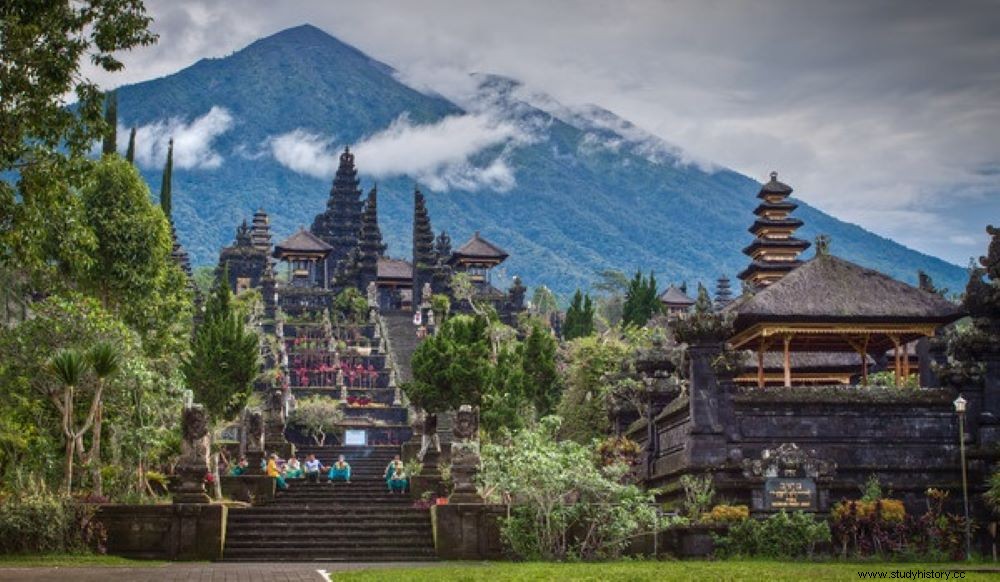
Pura tirta or water temples serve the irrigation function, for the most part rice fields are surrounded by these temples. They may also have the meaning of holy water performing cleansing rituals. The lake temples are also considered water temples. Pura Tirta Empul near the city of Ubud is the most famous example.
Pura segara or sea temples are majestic structures that are mostly used during Melasti rituals. The best example includes the Uluwatu Temple, Tanah Lot in Tabanan near Denpasar, Pura Rambut Siwi as one of the largest Hindu temples in Bali not far from Denpasar. You should also pay attention to Pura Paluang due to its unusual function as the temple of the car parked at Nusa Penida.
Less known seawater includes:
Pura Sakenan is a majestic architectural marvel located on the small island of Sakenan, easily accessible from Kuta.
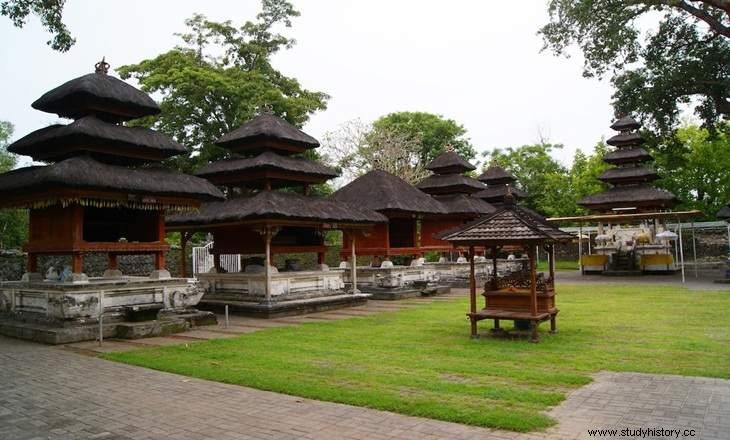
Pura Sakenan Temple, a temple located on the small island of Sakenan near Denpasar - photo by Meta Trip
Pura Mas Suka enjoys the cliff, which is located among the southern corner of Bali on the Bukit Peninsula.
Pura Pulaki is imbued with the stunning sculptures just along the coast and monkeys with their guiding hand. It is located in the Buleleng area at the westernmost point of Bali near the village of Banyu Poh.
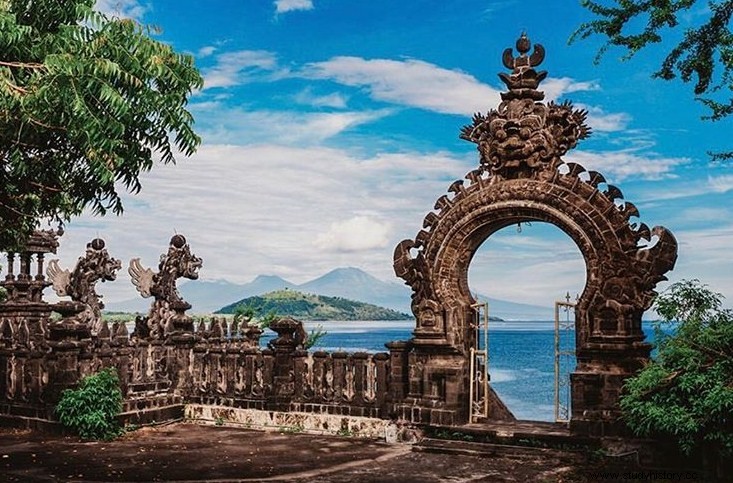
Pura Pulaki Temple is a sea temple located west of Singaraja near Bali- photo by Gerke House
Other Hindu temples in Indonesia:
Candi or Javanese Hindu temples
The word candi itself comes from the Sanskrit word Candikargha dedicated to the goddess Durga. After Islam originated through Indonesia in the 15th century, worship at Hindu temples begins to decline. Although some of them were reconstructed in the 19th century, their function is mostly active during festivals.
The most representative examples of Candi temples located on Java are:
Prambanan Temple is the largest Hindu temple complex consisting of 240 temples. Their carvings illustrate the events of Ramayana.
Candi Sambisari is and an underground temple from the 9th century. It is located in the village of Purwomartani, not far from Yogyakarta.
Candi Gunung Kawi located in Bali near Ubud, decorated with some stunning carvings.
Kuil or Indian Hindu temples
Kuil is the Indonesian name of Indian Hindu temples, otherwise known as kovil. While and Jakarta are the most common points in these temples that developed due to Indian immigration to Indonesia through the 19th century. They follow the architectural style preserved in India.
The Sri Mariamman Temple in Medan is the oldest from 1884.
Tips for visiting Indonesian temples:
As a place of worship, the temple has a special vibration that is preserved according to certain rules.
- Dress appropriately:
The rule that the birds can also adjust to is the golden splendor of temples. Your shoulders and legs should be covered, referring to both men and women.
Of course, sarongs are available for rent. This is a multifunctional scarf designed in different colored patterns. It can be used as a skirt, scarf or even a blanket. It is used for both men and women. Sarong is an integral part of Indonesian culture and is recommended for public use at least once a month by President Joko Widodo.
Flip-flops are acceptable. Special attention should be paid to the hairstyle to represent a nice look.
- Do not enter a temple if you are menstruating
Although this rule is specifically aimed at women, this rule should apply to anyone who bleeds.
- No vandalism
The ancient holy spirit of temples should be preserved. Stones should not be damaged in any way either by sitting or drawing to them.
- Do not go to flower arrangements on the streets
Flower supply or Canang Sari is a tradition that is rooted in almost every corner of Bali. These adorable sights are an expression of gratitude, which every morning Balinese people see as a new beginning. These little boxes of woven coconut leaves are filled with flowers, rice, snacks, sugar cane and bananas. Perfume is permeated through the structure that symbolizes peace.

Flower offerings consist of hand-woven baskets of coconut filled with flowers, rice and snacks - photo by Indoneo
Each flowering color has a unique meaning that creates a divine mood. They are arranged on the east, west, north or south side and dedication to the right God or goddess. Colors are carefully selected.
The name itself comes from the Kawi language and will be translated as such:Ka means beautiful and Nang means purpose. The main idea is to awaken the beauty by thanking the Balinese god Sang Hyang Widhi.
- Do not point your feet at shrines, your finger at anyone and do not touch other people
Modest behavior is the key as you enter the temple. Sacred objects should have a distance from the feet, so the best way is to sit in the lotus, half lotus or on the heels in Balinese style.
- Respect local rules and make a donation
Each temple follows its own rules, so you should adapt to the circumstances. The essence of each temple comes with the religious processions, so do not disturb. During a prayer is not the right time to enter.
Taking selfies should be considered in a nice way, so you should not force yourself to take a picture especially around the group.
Admission to most temples is free, but donations are appreciated
The structure and design of the temples:
The main characteristic of Balinese Hindu temples is their design as an outdoor structure while beautiful decorated gates are divided around. On the other hand, Indian temples are focused on indoors. Gopuram at the Indian temples is the most fascinating entrance decoration, the tower filled with ornaments.
Balinese Hindu temples follow the rule of third:
- Nista Mandala is the courtyard, outside the area that offers the entrance to the temple. Everyone can visit this area, especially tourists, as this is an area without prayer. Sometimes the religious dance performances are held here.
- Madya Mandala is the central area that serves as the place where the facilities are made. Temple kitchen is also kept here. This area is only open to those who wish to pray.
- Utama Mandala is central, the holiest point in the temple. Only those who want to pray are allowed to enter. It is the place where various statues of deities are located.
The design of the gates at Indonesian temples, respectively, shows the deeper features and its enchanting spirit. Two main functions are associated with Indonesian temple gates. First, it serves to indicate boundaries. Secondly, it creates an opening in the buildings. Gates represent the majestic significance of the main structure.
Ancient beliefs and religious writings say that the right construction would bring happiness to the people.
Two types of ports should be recognized:
- Candi Bentar are the split gates with two similar buildings divided at the same distance. The pure spirit of the open-air temple takes effect.
- Parudaksa or Kori Agung is a typical tower gate enriched with ornaments. It originates from India and gopuram, the classic tower that decorated the entrance. Kori Agund is the Muslim name of the same structure that many mosques in Indonesia offer a proper welcome with Kori agung. The purest example is one of the oldest mosques, the Menara Kudus Mosque in central Java.
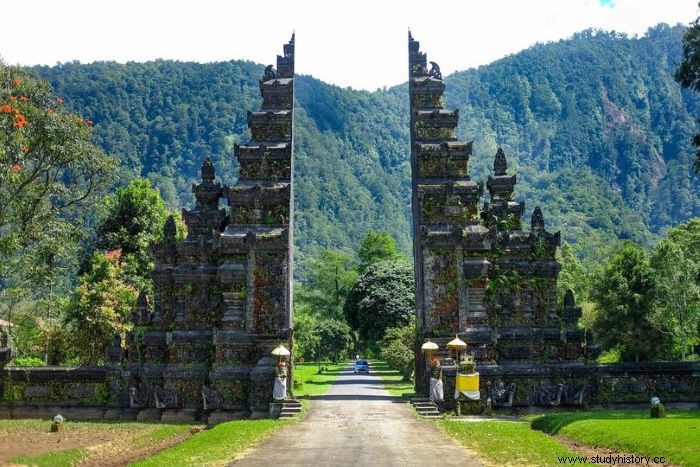
Candi Bentar Gates, typical form of split gates - photo of Now Bali
Hinduism through the History of Indonesia
With the rays of the first century, Hinduism breaks through Indonesia where the kings established the meaning of temples. Although Hinduism exists as a minor religion, the temples sealed the ancient magic. At the same time, Hinduism is beginning to mix with Buddhism. Borobudur as one of the largest Buddhist temples in the world shines in its hidden traces of central Java. It was established in its glory during the short period of British rule in Java in the early 19th century. Now it is the official place of worship especially during religious festivals such as Vesak. Vesak celebrates the time when Siddhartha Gautama experienced that cognition became a healing Buddha.
After the flourishing of Islam in Indonesia during the 13th century, it soon became the official religion. Under the Dutch colonial empire, Indonesia became the idea of tolerance and all-encompassing religious influence.
The most amazing temples to visit in Indonesia
- Lempuyang Temple
The most famous temple in Bali is located on the shores of Easter near the city of Karangasem. Also known as the gates of heaven, one of the most instagrammable places in Bali reflects nothing but a clever photograph. It is one of the oldest temples in Bali located 1175 meters above sea level with 1700 steps to climb through. You will be endowed with the most scenic panorama of Bali here.
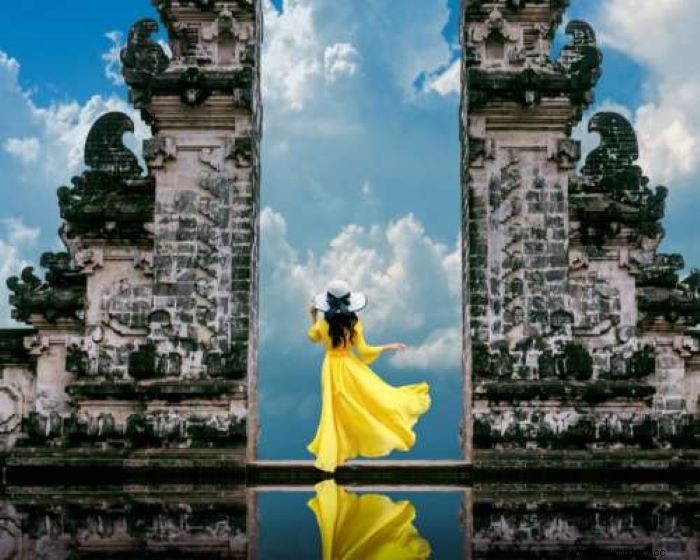
Temple Lepuyang, scenic temple on the east bank of Bali near Karangasem - photo by Outlook India
- Goa gajah
Goa Gajah near Ubud is a charming cave complex with some swimming pools and fountains. This whole old area from 8.-10. century is embraced by rice fields.
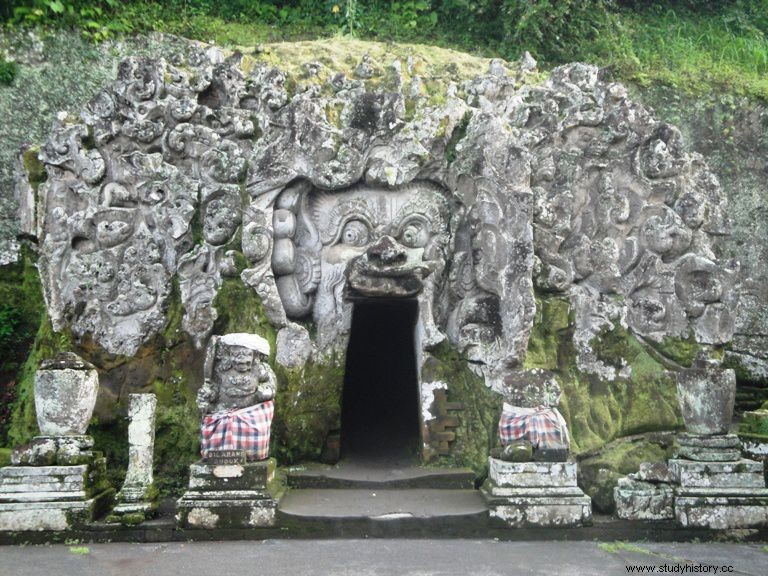
Temple Goa Gajah, cave temple near Ubud - photo by Best Bali Holiday Tours
- Tanah Lot
Exclusive setting for a mini-island is a postcard story. Located in Tabanan on the west side of Bali, this is a perfect sunset. Legend has it that the temple was created by a monk who found his meditation place here.
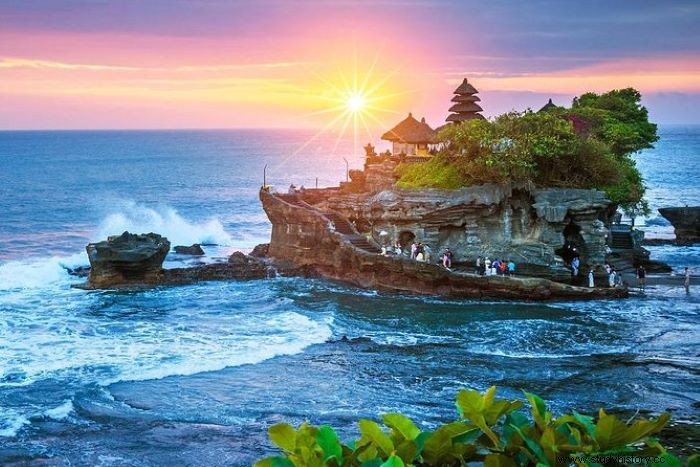
Temple Tanah Lot, Tabanan Sea Temple - Photo by Viator Tours
- Uluwatu Temple
Although Uluwatu is quite a scattered place, it is framed on the stunning cliff. One of them is the Uluwatu Temple which is located on the steep slope which is about 70 meters high. Surrounded by the abundant forest temple offers stunning sunsets. You can experience a fantastic Kecak dance every day from
Since it is quite isolated from the city without public transport, the best way to get there is by taxi or rented car.
- Pura Ulun Danu Beratan
Located on Lake Beratan in central Bali in the city of Tabanan, this temple dates back to the 17th century. The scenic mountain views are imbued with iconic Balinese spirit. This is a popular tourist and recreation place with various water sports especially for the locals. The Eka Karya Botanical Gardens in the immediate vicinity offer added value.
the conclusion
Indonesian temples offer not only architectural beauty and spiritual enchantment, but also a unique approach to the Holy Spirit. They are deeply rooted in culture, making everyday life a threshold for humility.
Historical insight provides understanding not only for multiple religions in one place, but for the enchanting Indonesian look. These impressive landmarks have managed to fight for the battle of time, whistling from hidden corners and forgetting essence. Engraved on Indonesian way of life temples talk about acceptance and amazement to focus.
Although the temples are most expressive during festive days, the temples hold the vision to embrace, a challenge to win. Incredible architecture and stunning views invite so picturesque to visit Indonesia. Elegant as they are, Indonesian temples will splash you with exquisite mystery and a thousand secrets to keep. The open air position of Hindu temples is the most amazing way to hold your breath during these majestic wonders. The most amazing way to immerse yourself in Indonesian culture is definitely by visiting the temples, the amazing beauty that speaks of a thousand magical truths to be found.
